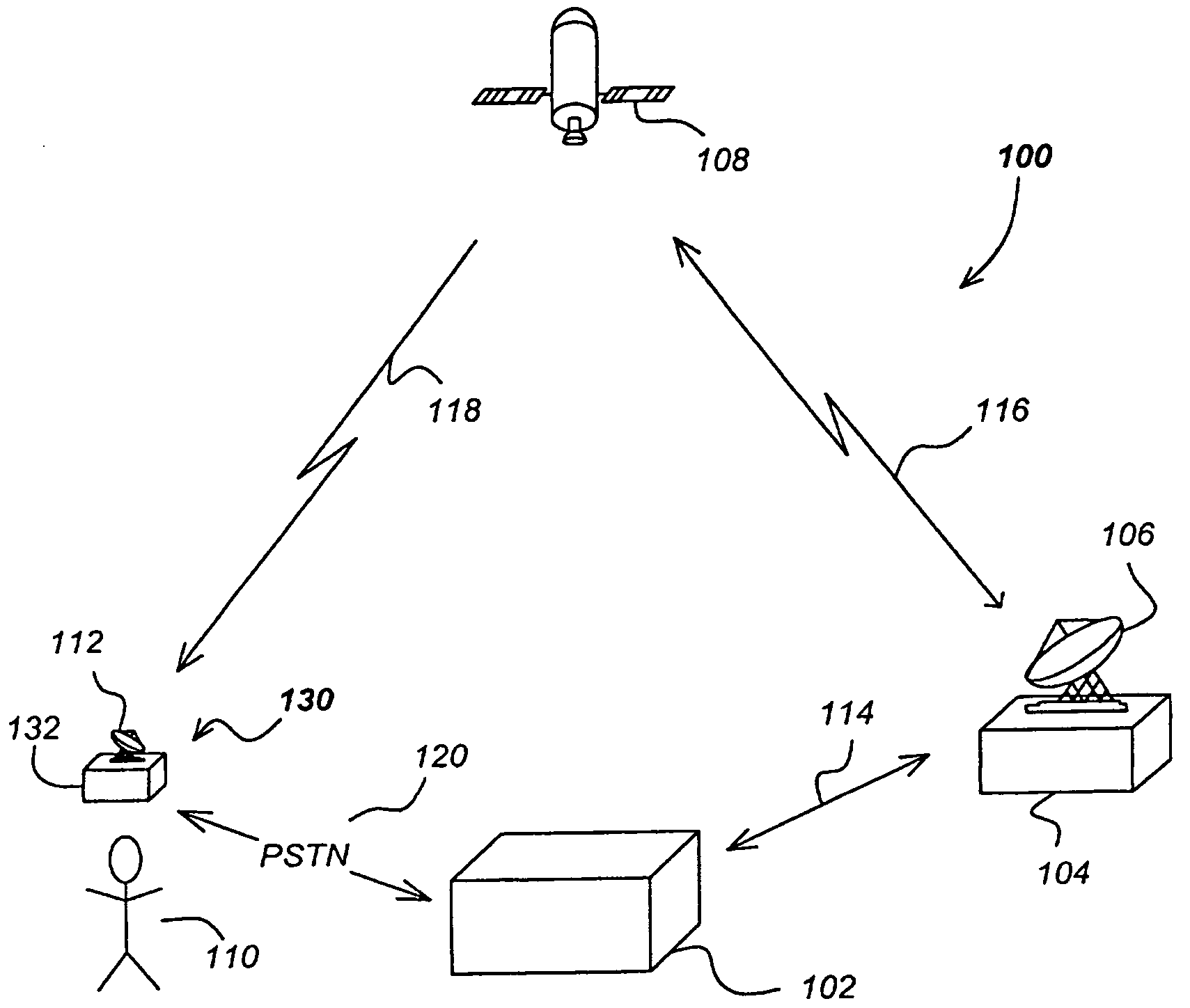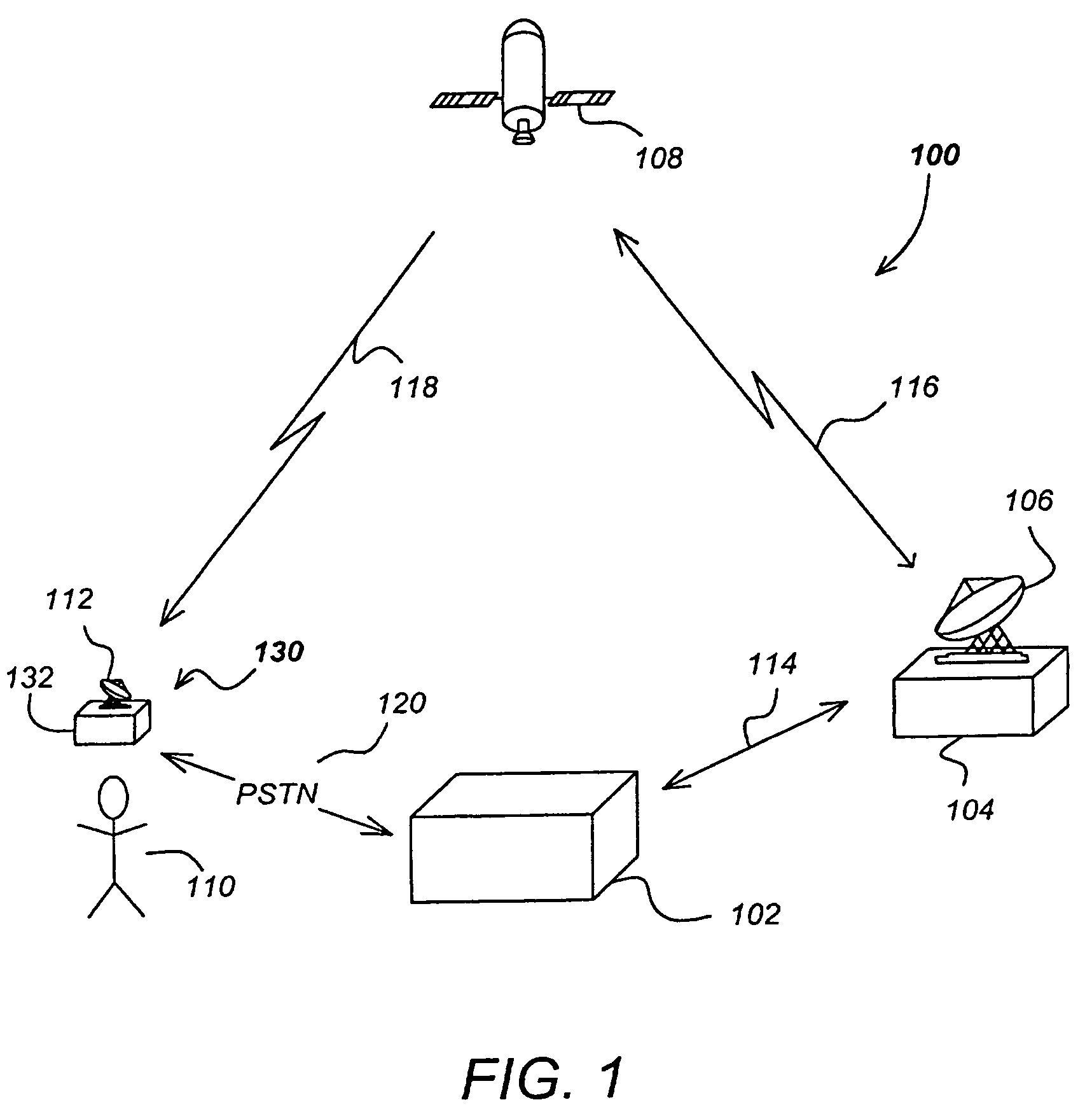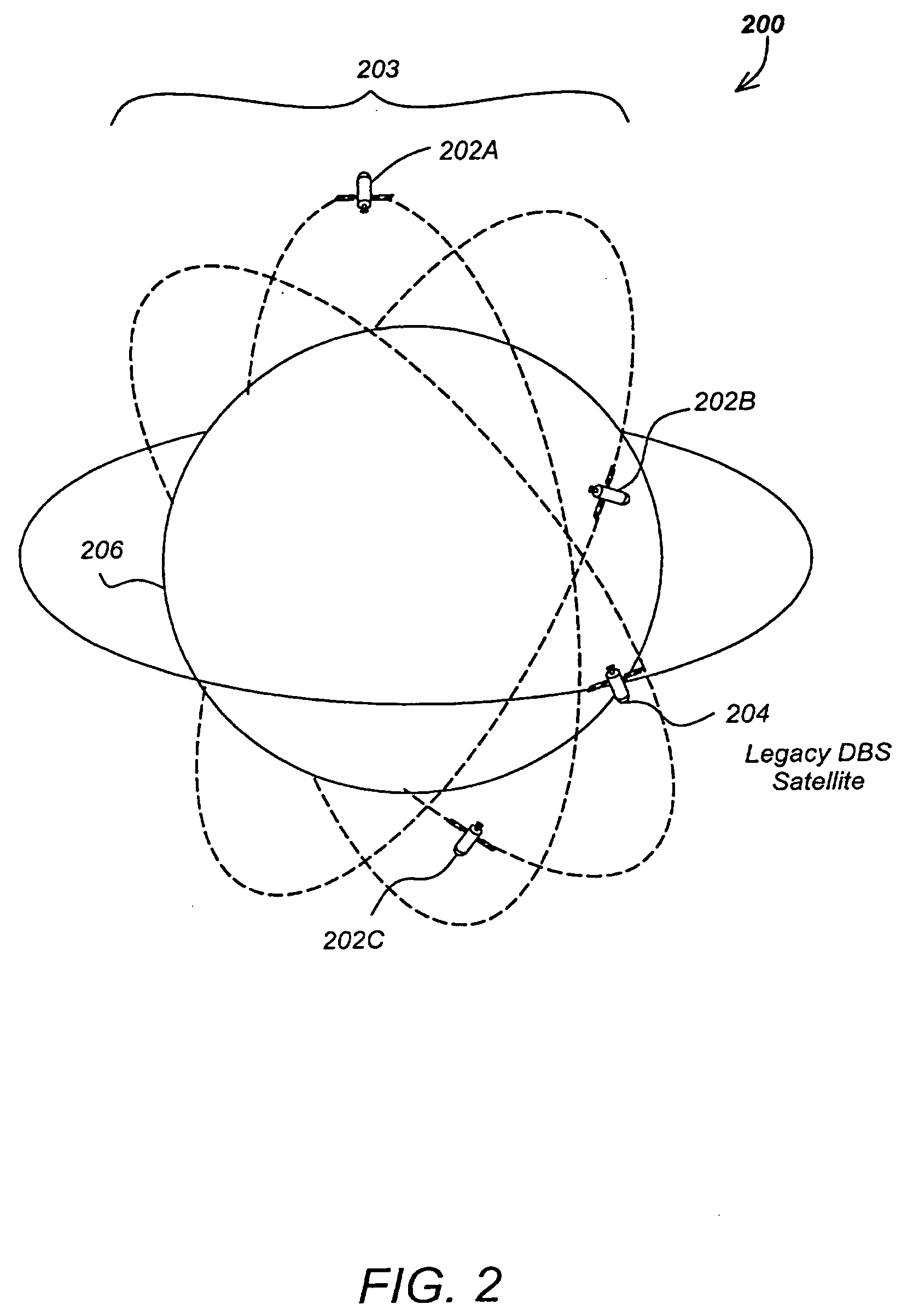System and method for continuous broadcast service from non-geostationary orbits
a technology of continuous broadcast service and non-geostationary orbit, which is applied in the field of system and method for providing satellite broadcast service, can solve the problems of limiting the maximum number of channels that existing dbs service can provide, requiring much higher bandwidth, and worsening of spectrum/channel shortag
- Summary
- Abstract
- Description
- Claims
- Application Information
AI Technical Summary
Benefits of technology
Problems solved by technology
Method used
Image
Examples
Embodiment Construction
[0020]In the following description, reference is made to the accompanying drawings which form a part hereof, and which is shown, by way of illustration, several embodiments of the present invention. It is understood that other embodiments may be utilized and structural changes may be made without departing from the scope of the present invention.
Video Distribution System
[0021]FIG. 1 is a diagram illustrating an overview of a video distribution system 100. The video distribution system 100 comprises a control center 102 in communication with an uplink center 104 via a ground or other link 114 and an integrated receiver / decoder (IRD) 132 at terrestrial receiver station 130 via a public switched telephone network (PSTN) or other link 120. The control center 102 provides program material to the uplink center 104, coordinates with the receiver station 130 to offer subscribers 110 pay-per-view (PPV) program services, including billing and associated decryption of video programs.
[0022]The ...
PUM
 Login to View More
Login to View More Abstract
Description
Claims
Application Information
 Login to View More
Login to View More - R&D
- Intellectual Property
- Life Sciences
- Materials
- Tech Scout
- Unparalleled Data Quality
- Higher Quality Content
- 60% Fewer Hallucinations
Browse by: Latest US Patents, China's latest patents, Technical Efficacy Thesaurus, Application Domain, Technology Topic, Popular Technical Reports.
© 2025 PatSnap. All rights reserved.Legal|Privacy policy|Modern Slavery Act Transparency Statement|Sitemap|About US| Contact US: help@patsnap.com



